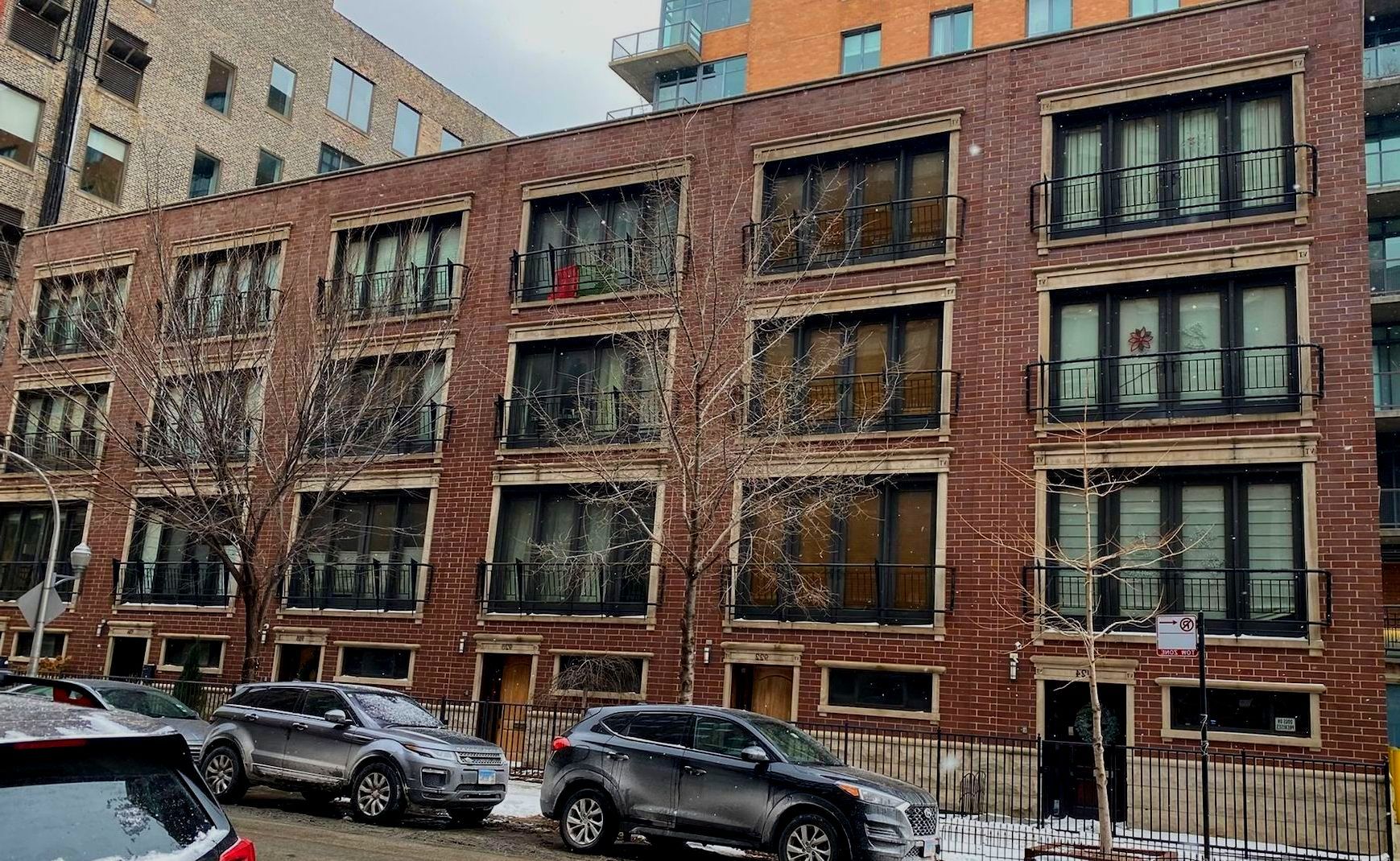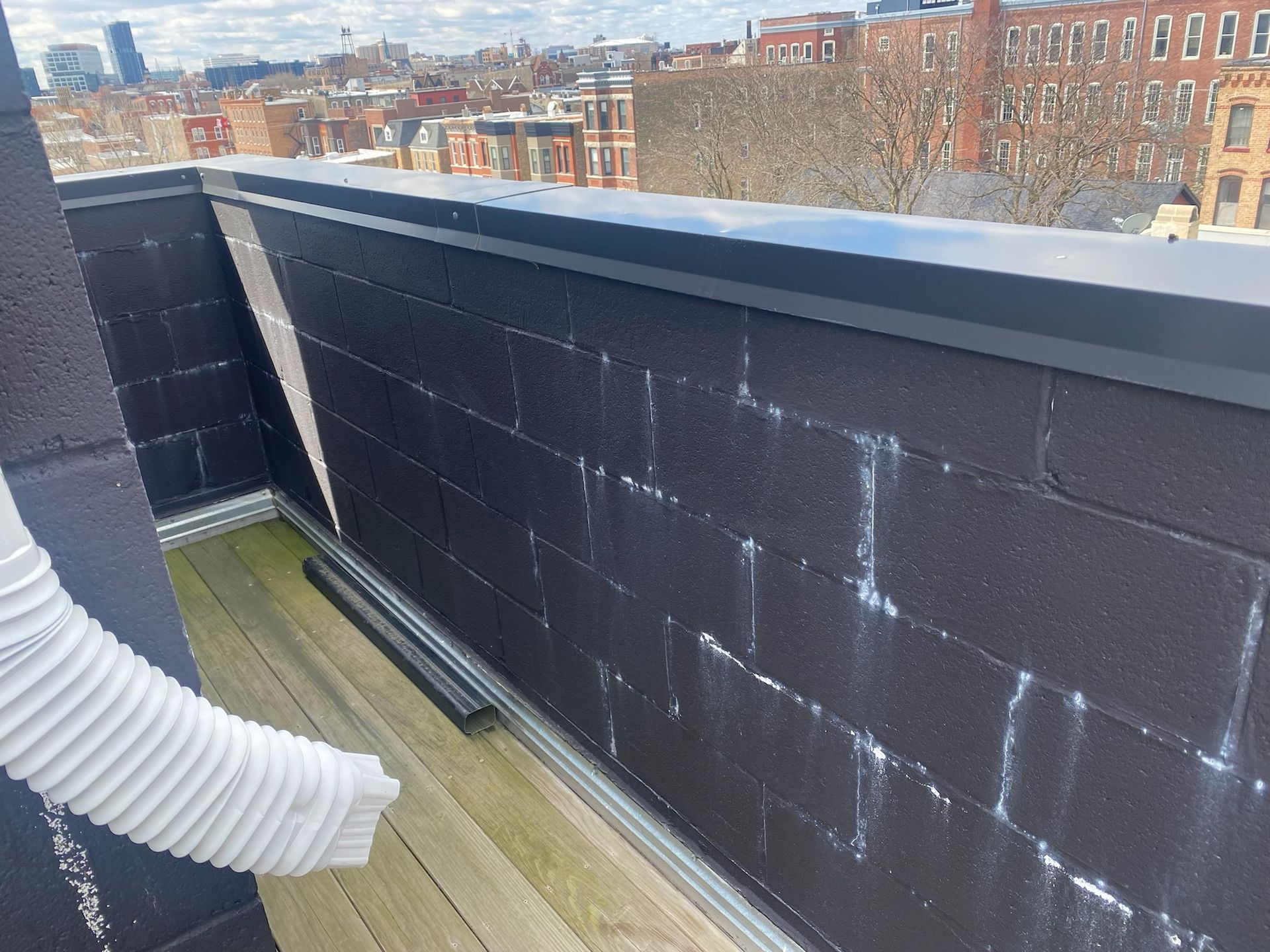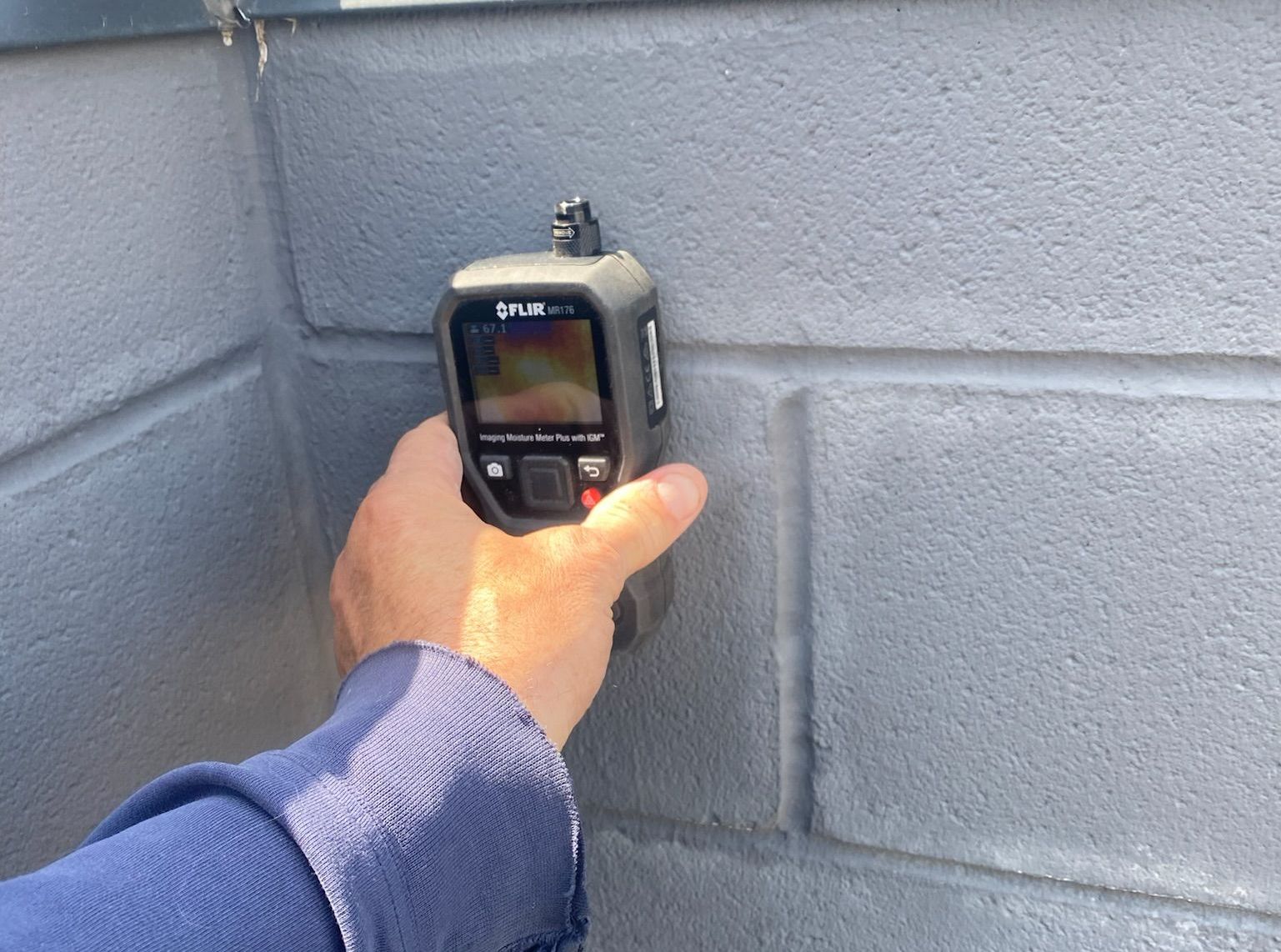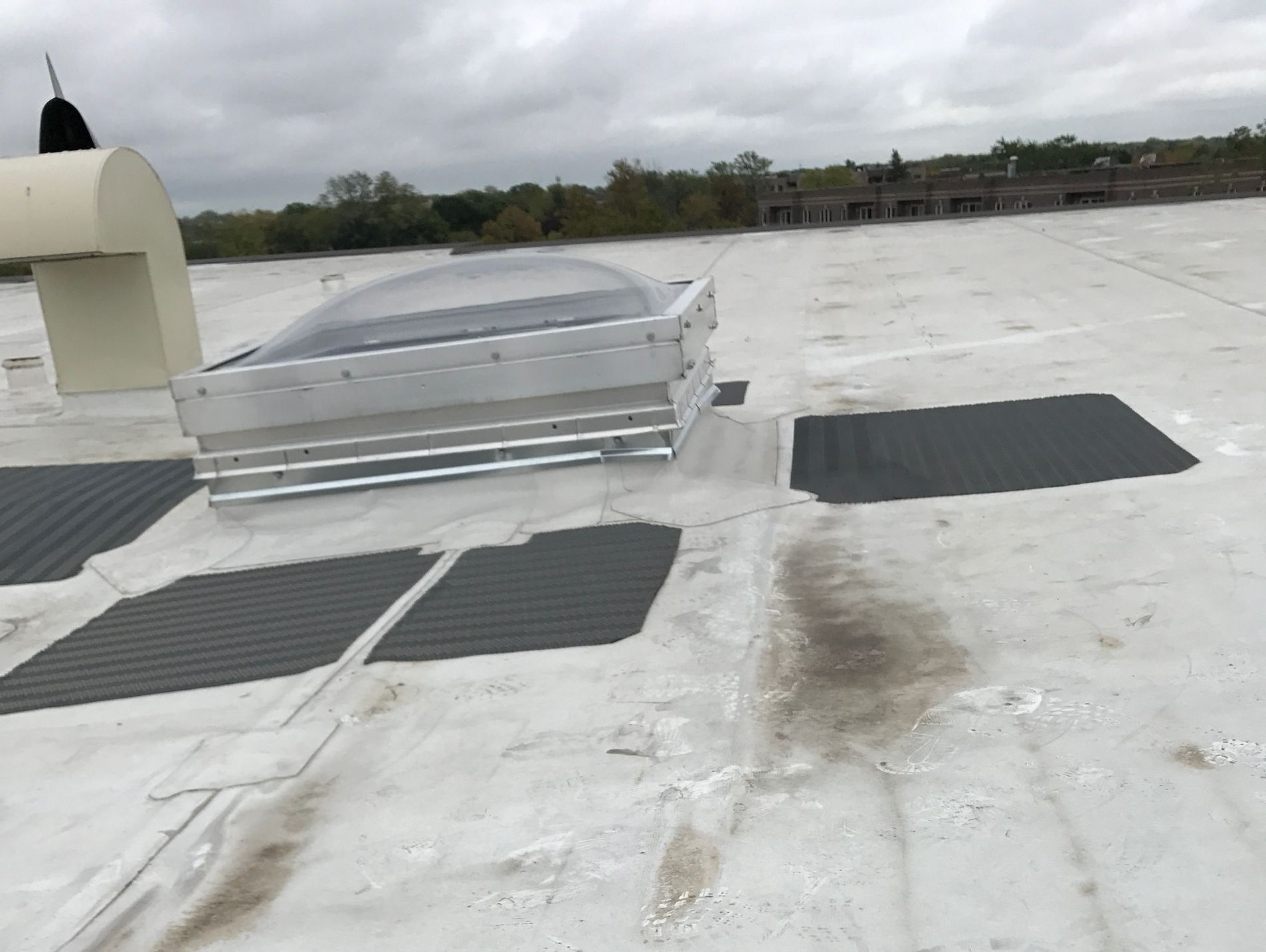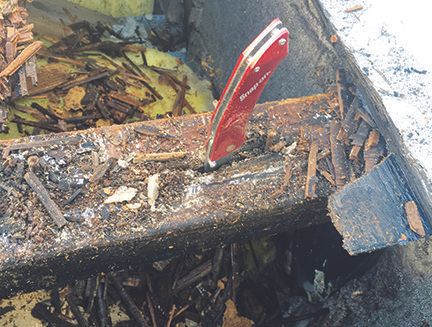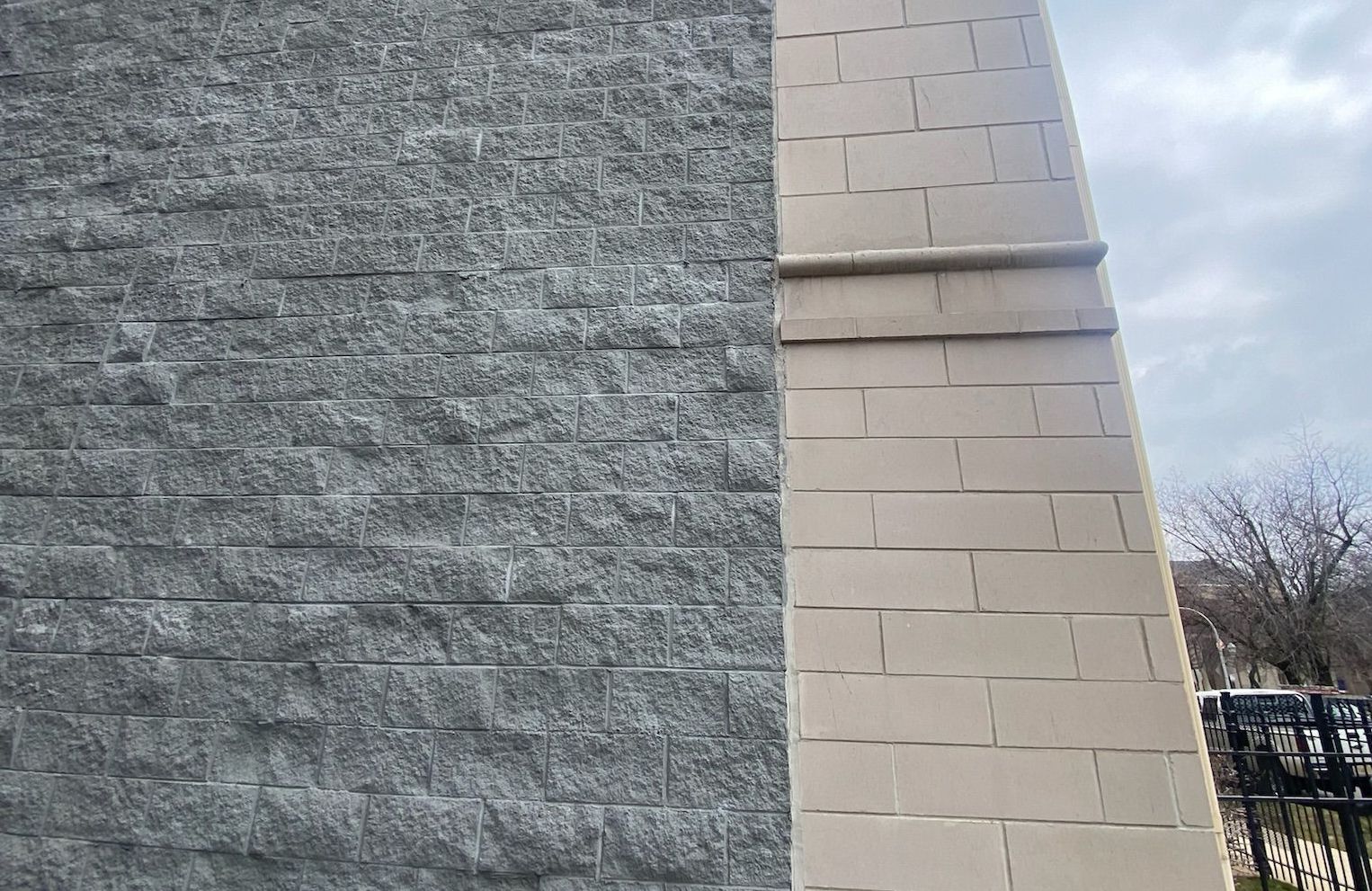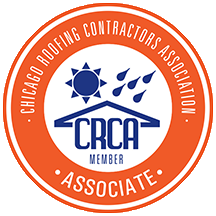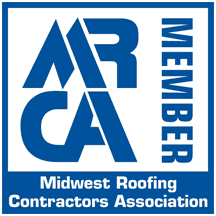Expert Forensic Building Exterior Analysis
Exterior Building Evaluation
Brick/block construction with Renaissance Stone window and door surrounds and parapet capstones on front and side evelations. Split Face Block construction rear elevation in Chicago's West Loop neighborhood
Bob Kelly, provides comprehensive exterior evaluation and analysis of masonry construction and flat roof construction on buildings of all shapes and sizes, from single family homes, to Chicago's 3-flats, to 22 unit mixed-use condo buildings to high rise condo buildings and commercial buildings.
As a moisture intrusion specialist with over 35 years of experience fixing historic and contemporary masonry buildings in Chicago and on Chicago's North Shores, Bob also provides building evaluations for buildings with Stucco and Dryvit exteriors, as well as traditional frame buildings.
Bob has over 15 years experience specifically evaluating and fixing relatively new masonry buildings (built since 1990-present day) constructed with Split Face Block and Pre-Cast Concrete details. He invented WickRight Passive Ventilation® as a response to Chicago's pervasive Wet Building problem. WickRight parapet and flat roof vents, custom flashing profiles and innovative repair designs have dried out over 120 wet buildings in the Chicago area, Milwaukee, Tampa and California.
If your building has persistent leaks, call to schedule an evaluation.
Leaking Masonry Evaluation
Saturated split face block parapet wall in Chicago's Lincoln Park neighborhood
Since 2012, Bob has concentrated specifically on evaluating and repairing new masonry buildings, mostly located in Chicago. We refer to these buildings built between 1990-2024 as "new" because "old" masonry typically only requires periodic maintenance.
Most of the buildings experiencing severe moisture intrusion issues are constructed with Split Face Block, Rock Face Block and basic concrete block. All of these blocks are called CMU (Concrete Masonry Units) in the construction industry. Many of these buildings have a brick facade with block structural wall on the front elevation and CMU on the side and rear elevations.
Many of these buildings also have Renaisance Stone or Pre-Cast Concrete decorative details on the front elevation. Historically, these details were natural Limestone. Limestone does leak, but it filters water slowly. Water runs through Renaissance stone freely – right into your home.
If you have white stains on your walls or mysterious leaking in your home, schedule an evaluation today – 312-720-1467
Leak Diagnosis
Saturated concrete block wall
Rilem Test for porosity of wet masonry wall in Chicago's Old Town neighborhood. This wall needs to be sealed.
"My split face block building was just sealed with elastomeric paint. It looked like the guys did a good job, but the walls are wet and bubbling. What's going on?"
Good question. One reason why your new, extremely expensive sealant application is bubbling, is that water already trapped in the wall needs to escape.
After a week of 90º heat, the water trapped in the wall transforms into moisture vapor. When water turns into vapor it expands up to 1600 times – which means it's either going to push elastomeric paint off the wall (bubbling) or join you for dinner or both.
If WickRight parapet vents are installed on the parapets, the moisture vapor has an easy exit. It's physics and it works for the life of your building.
When we diagnose leaks in masonry buildings, we use moisture meters to determine the approximate percentage of moisture contained in walls. We also use Rilem testing, which tells us how porous the walls are, indicating if a new sealant application is needed.
We look at all the usual leak suspects:
- The way the parapets are capped off
- Flashing under capstones on parapets or lack thereof
- Damaged capstones, clay copings or metal copings
- Length of legs on metal copings
- Sealant and type or lack thereof
- Pinholes in elastomeric coating applications
- Missing mortar or cracks in the mortar
- Damaged CMU (cracked in two, pitted or falling apart) or spalling brick (face of brick is flaking off)
- "Stone" details - the type of "stone", the installation pitch and flashing or lack thereof
- Transitions between material types and expansion joints
- Balcony connections to walls
- Doors, headers, sills and openings
- Windows, headers, sills and openings
- Chimneys and chimney caps
And yes, of course, we will check the roof and all things roof-related.
We provide easy to read, plain English reports and estimates for the repairs that are needed.
We evaluate the condition and estimate the remaining useful life of residential and commercial low-slope roofs (flat roofs), specifically the following roof membrane types:
- Modified bitumen (smooth) – should be silver, but could be black if Aluminum Silver Coating has not been applied or has eroded
- Modified bitumen (granulated) - light or dark grey, nubby
- Thermoplastic polyolefin (TPO) - white
- Ethylene Propylene Diene Monomer (EPDM) - black rubber
Having regular roof evaluations performed is important for reserve planning. Roof replacement is expensive and all roofs have a limited life, typically 15-30 years depending on the membrane type and how well it has been maintained.
We determine the condition of all the roof components, including the membrane, seams, sheathing, all roof to wall connections and roof termination, ventilation and penetration boots and pitch pans.
We provide easy to read, plain English reports and estimates if repairs are necessary.
Masonry and Roofing Structural Engineering Services
Rotting truss in Ravenswood neighborhood, Chicago, IL
WickRight provides comprehensive Structural Engineering Services for buildings with structural damages due to moisture intrusion. Many residential buildings in Chicago are built with the trusses, joists or TJIs embedded in masonry pockets in the the brick or block wall. It is a common building practice that can cause building collapse if multiple support units are compromised.
WickRight prefers to reinforce trusses, rather than replace trusses if possible. However we have several 365 Construction Tent contractor customers that prefer to replace trusses and start new. There are pros and cons to both scenarios.
Reinforcing trusses is typically less expensive than replacing trusses and can be accomplished from the top down -- meaning that all the work is done from on top of the roof. Replacing trusses requires removal of the entire roof system and tenting to protect the structure. Depending on the number of floors, residents need to relocate until the work is completed.

